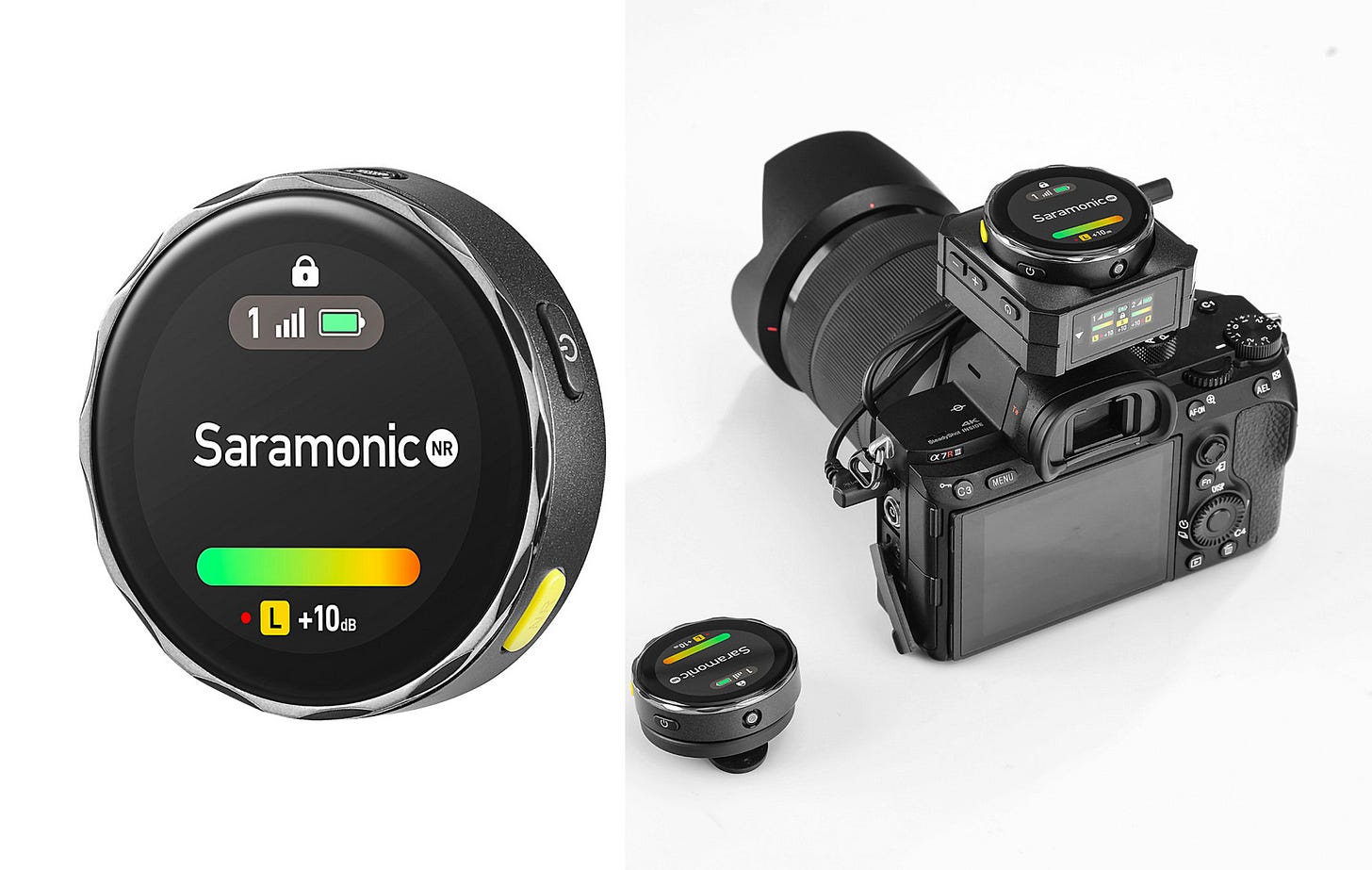Let's Talk About Teen Mental Health
Anyone with teens in their lives — parents, grandparents, uncles/aunts — should pay attention.
Sree’s newsletter is produced with Zach Peterson (@zachprague), with the Digimentors Tech Tip from Robert S. Anthony (@newyorkbob). Many thanks to our sponsor, Armory Square Ventures.
🗞 @Sree’s Sunday #NYTReadalong: Our guest this week was Jesse Pesta (@jessepesta), Deputy Editor of NYT Climate, who discussed NYT’s coverage of climate and his career, which includes a stint as WSJ South Asia correspondent. You’ll find three years’ worth of archives at this link (we’ve been reading the paper out loud on social for 7+ years now!). The Readalong is sponsored by Muck Rack. Interested in sponsorship opportunities? Email sree@digimentors.group and neil@digimentors.group.
🎯 Work with us! Our company, Digimentors, works to increase the digital footprint and impact of companies and nonprofits around the world. We do this via digital and social consulting, as well as virtual/hybrid events production and all kinds of training. See our updated brochure (would love your feedback). Get in touch (no project too big or too small): sree@digimentors.group and neil@digimentors.group. If you’d rather chat, here’s my Calendly.
⚒️ NEW: Digimentors Tools Kit: People are always asking me for recommendations for gadgets, gizmos, websites, etc. So my Digimentors team has created a tools kit we will keep updating. Take a look!
***
WE ARE IN THE MIDST OF TEEN MENTAL HEALTH CRISIS. It’s happening right now. Our children, our grandchildren, our nieces and nephews, our neighbors, are not “at risk,” they are living it.
Rhetorically, social media has become the “violent video games and movies” of the modern era. For decades, lazy thinkers everywhere galvanized around violence in media as a key motivator behind depression, crime, and so many other social ills. Now, it’s social media. If someone is depressed, it’s because of social media. When someone shoots up a school or a Walmart, it’s social media at the center of it.
The key difference here is that social media’s existence almost certainly is to blame for so many awful things in our world. Social media is contributing to declines in mental health, and increases in self-harm, and is the radicalization engine of choice for any group trying to radicalize people.
The toll social media use is taking on young people is massive, and it does not appear that the potential benefits of community and shared interests are enough to outweigh the negatives. The outright hate and viciousness are enough for anyone, but body image issues, lifestyle emulation, and other things are driving a crisis that parents and educators are just not able to handle. It’s gotten to the point where school districts, counties, and some cities are suing the social media giants they see as at fault.
From Marianna McMurdock at The74:
Algorithms and platform design have “exploited the vulnerable brains of youth, hooking tens of millions of students across the country into positive feedback loops of excessive use and abuse of Defendants’ social media platforms,” Seattle Public Schools claimed in the first suit filed this January.
Districts in Washington, Oregon, Arizona, New Jersey, California and Florida, Alabama, as well as one Pennsylvania county say tech companies intentionally target young users, exacerbating depression, anxiety, tech addiction and self-harm, straining learning and district finances.
But the legal fight, whether tried or settled, will not be easy, outside counsel and at least one district leader said.
“We don’t think that this is a slam dunk case. We think it’s going to be an uphill battle. But our board and I believe that this is in the best interest of our students to do this,” said Andi Fourlis, superintendent of Arizona’s largest district, Mesa Public Schools. “It’s about making the case that we need to do better for our kids.”
U.S. Surgeon General Dr. Vivek Murthy recently issued an advisory on social media use and teen mental health, and it’s clear that the case against social media is overwhelming. Whether that will hold up in any court is another matter altogether. After all, the platforms are just that — platforms. Their argument is and will be the same as it is with disinformation, racism, conspiracy theories, and most everything else: We just provide a place to publish and create, we don’t do the publishing and creating, you do.
This is on the second page of the advisory:
More research is needed to fully understand the impact of social media; however, the current body of evidence indicates that while social media may have benefits for some children and adolescents, there are ample indicators that social media can also have a profound risk of harm to the mental health and well-being of children and adolescents. At this time, we do not yet have enough evidence to determine if social media is sufficiently safe for children and adolescents.
It’s striking that the system is backward. Rather than having something in R&D, working out the kinks and bugs before deployment, these products are being used by billions of people. They have been iterated upon and optimized for attention since day one. Just now we’re seriously talking about their safety, and the verdict that we are pretty sure it’s not good.
Young women are particularly at risk, their peers know it, their parents are worried about it, and the social media giants are very much aware of the whole thing. And, I would go so far as to say the effects of social media use on adults isn’t much better.
So, where do we go from here? My friend Mary C. Curtis (@mcurtisnc3) just interviewed Julie Scelfo (@juliescelfo) of Get Media Savvy about what is needed from policymakers and the public to tackle the youth mental health crisis and rebuild our civic fabric. Check out her fab podcast.
My friends Vivek Wadhwa and Alex Salkever wrote a book on this topic in 2018, long before enough people were paying attention. Dr. Dean Ornish called it “the most important book ever written about one of the most significant aspects of our lives — the consequences of our addiction to online technology and how we can liberate ourselves and our children from it." Read “Your Happiness Was Hacked: Why Tech Is Winning the Battle to Control Your Brain--and How to Fight Back.”
One immediate step families can take is in Dr. Murthy’s advisory:
“Children and adolescents who spend more than 3 hours a day on social media face double the risk of mental health problems including experiencing symptoms of depression and anxiety.”
I bet if any parent or grandparent knew that stat, they’d do all they could to urgently cut down those hours.
— Sree / Twitter | Instagram | LinkedIn | YouTube
🤖 I’m now offering workshops about AI, ChatGPT, etc. They’re 20 minutes to 3 hours long, remote or in-person. No audience is too big or too small. If you know of any opportunities to present these (customized for businesses, nonprofits, schools, etc), LMK: sree@digimentors.group. Here’s the brochure to my non-scary guide to AI: http://bit.ly/sreeai2023
Something to Listen To
I always find myself sharing Kara Swisher content, and I never regret it. You probably already listen to her Pivot podcast with Scott Galloway — if you don’t, please start! — but maybe you missed their interview with Chasten Buttigieg. It’s Pride Month, so expect a mix of pro-LGBTQ+ cynicism from brands, anti-LGBTQ+ violence from right-wing grifters and wannabes, and some fun parades. This interview gets past it all, and hits hard about the difficulties LGBTQ+ people in rural communities have, the hate-for-profit engine that is harming people right now, and so much more. It’s a great, grounded discussion that just struck me as so heartfelt and serious and as a call to action to be a better, more active ally.
Listen on Apple Podcasts, Spotify or other podcast app. The episode was published on May 23.
DIGIMENTORS TECH TIP | Saramonic BlinkMe Wireless Microphones: Here’s Looking at Me
By Robert S. Anthony
Each week, veteran tech journalist Bob Anthony shares a tech tip you don’t want to miss. Follow him @newyorkbob.
In this age of selfies, vlogs and teleconferencing, it’s not surprising that the equipment we use to capture ourselves has evolved quickly, especially during the extended stay-at-home period of the recent pandemic. Even simple devices like microphones have become lighter, more responsive, and, in some cases, just plain cooler.
The new Saramonic BlinkMe 2-Person Smart Wireless Mic System works with digital cameras, cell phones, tablets, computers and other hardware with USB-C or 3.5mm ports, but its niftiest feature is something you don’t expect in a wireless microphone: a color touchscreen.
No, the 1.3-inch color TFT LED display isn’t a gimmick, but a functional touchscreen which allows access to all microphone settings. However, the fact that users can change the microphones’ displays from a clock or an audio-level meter to a corporate logo, a photo or other image is a cool extra aimed directly at social media influencers, according to Saramonic.
The two coin-shaped wireless microphones can be clipped onto clothing, have a range of up to 328 feet and can be used for up to 8 hours between charges, according to the company. The microphones offer active noise cancellation to enhance voice quality and store magnetically on either side of a small receiver/charger box. A free mobile app allows users to access to all features including customizing the microphones’ displays.
Each microphone offers 8GB of onboard storage for up to 22 hours of audio, which means they can also be used as simple audio recorders. You could place one on a podium during a speech, for example, and download the audio from the microphone later.
The receiver itself has a has a 1-inch touchscreen which lets users configure the microphones, monitor battery life and audio levels and perform other functions. The receiver has a headphone jack, a useful feature for digital cameras which lack one, and runs for up to 24 hours per charge. A magnetic bracket allows the unit to be mounted on a camera’s hot shoe.
Audio from the two Saramonic BlinkMe microphones can be mixed in mono mode or separated into right and left channels in stereo mode and audio can be recorded from the USB-C and 3.5mm audio outputs on the receiver simultaneously, which lets users record to multiple devices at once. The $249 Saramonic BlinkMe wireless microphone system is expected to be available by May 31.
❓Did we miss anything? Make a mistake? Do you have an idea for anything we’re up to? Let’s collaborate! sree@sree.net and please connect w/ me: Twitter | Instagram | LinkedIn | YouTube / Cameo.
And don’t forget…
⚒️ NEW: Digimentors Tools Kit: People are always asking me for recommendations for gadgets, gizmos, websites, etc. So my Digimentors team has created a tools kit we will keep updating. Take a look!







I have been thinking a lot about this. My daughter is 10. Sigh.
How did we get here? And it's what's available to teens and younger kids in general that's so scary. It's not social media, but my 7-year-old grandson knows about Squid Games from friends. These boys have older siblings . . . but there's one kid I think has seen at least parts of the series and I think his parents have let that happen. My daughter and SIL can stop my grandson from acting out the games, but what happens when he's doing this in places where there are no parental controls? Same thing for parents who are truly trying to reign in their teens and social media. There's only so much a parent can control. I'm terrified.